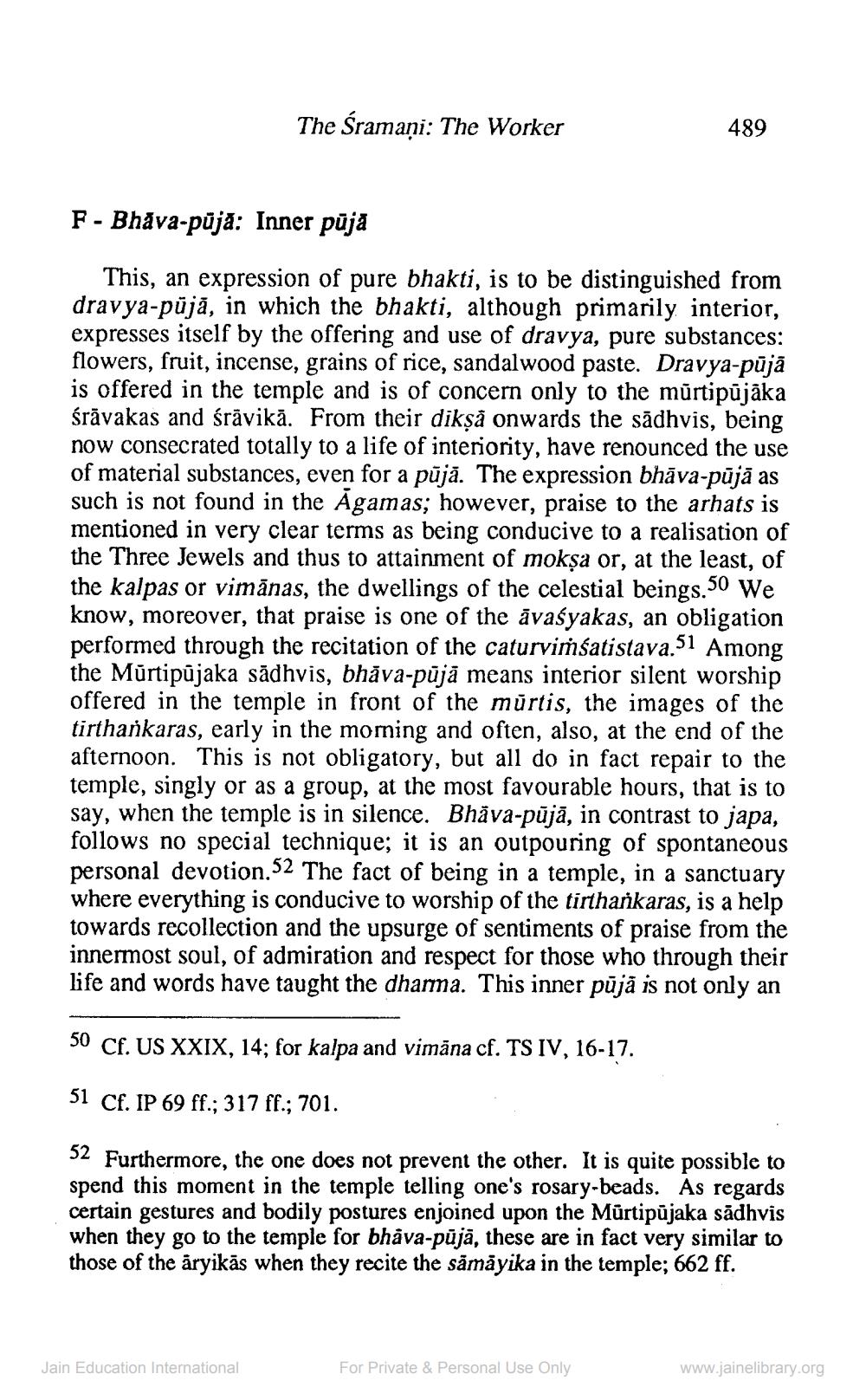________________
The Šramaņi: The Worker
489
F - Bhāva-püja: Inner pūja
This, an expression of pure bhakti, is to be distinguished from dravya-püjā, in which the bhakti, although primarily interior, expresses itself by the offering and use of dravya, pure substances: flowers, fruit, incense, grains of rice, sandalwood paste. Dravya-pājā is offered in the temple and is of concern only to the mūrtipūjāka śrāvakas and śrāvikā. From their dikşå onwards the sādhvis, being now consecrated totally to a life of interiority, have renounced the use of material substances, even for a pūjā. The expression bhāva-pūjā as such is not found in the Agamas; however, praise to the arhats is mentioned in very clear terms as being conducive to a realisation of the Three Jewels and thus to attainment of mokṣa or, at the least, of the kalpas or vimānas, the dwellings of the celestial beings.50 We know, moreover, that praise is one of the āvaśyakas, an obligation performed through the recitation of the caturviṁsatistava.51 Among the Mūrtipūjaka sādhvis, bhāva-pūjā means interior silent worship offered in the temple in front of the murtis, the images of the tirthankaras, early in the morning and often, also, at the end of the afternoon. This is not obligatory, but all do in fact repair to the temple, singly or as a group, at the most favourable hours, that is to say, when the temple is in silence. Bhāva-pūjā, in contrast to japa, follows no special technique; it is an outpouring of spontaneous personal devotion.52 The fact of being in a temple, in a sanctuary where everything is conducive to worship of the tirthankaras, is a help towards recollection and the upsurge of sentiments of praise from the innermost soul, of admiration and respect for those who through their life and words have taught the dharma. This inner pūjā is not only an
50 Cf. US XXIX, 14; for kalpa and vimāna cf. TS IV, 16-17.
51 Cf. IP 69 ff.; 317 ff.; 701.
32 Furthermore, the one does not prevent the other. It is quite possible to spend this moment in the temple telling one's rosary-beads. As regards certain gestures and bodily postures enjoined upon the Mürtipujaka sādhvis when they go to the temple for bhava-pājā, these are in fact very similar to those of the aryikās when they recite the sāmāyika in the temple; 662 ff.
Jain Education International
For Private & Personal Use Only
www.jainelibrary.org




